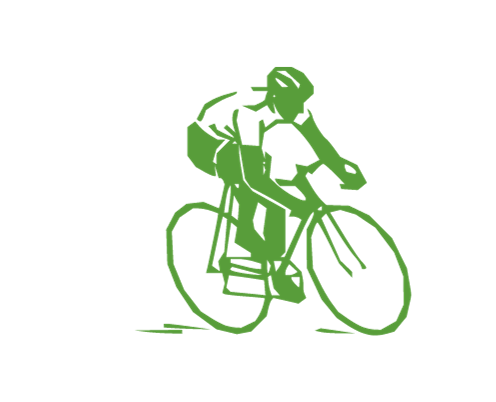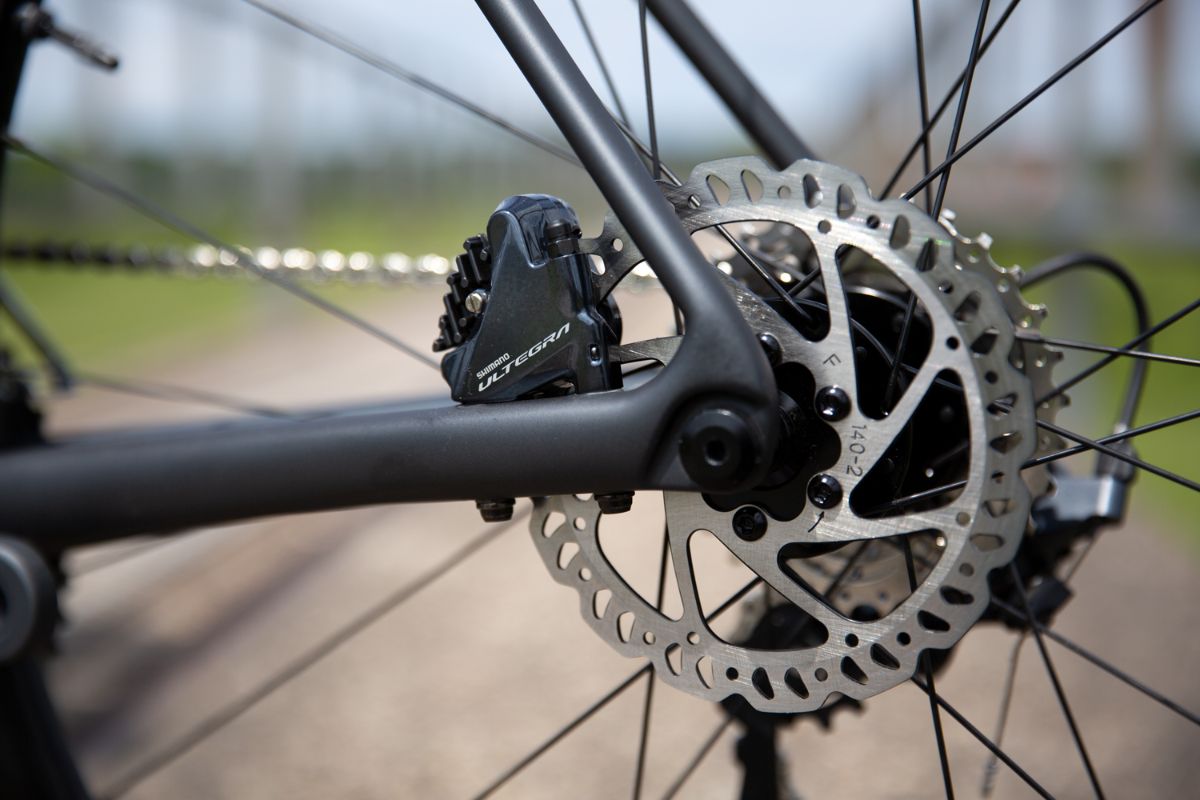
In cycling, e-bike brakes are a significant part, especially when it comes to safety. No matter how fast you ride, at some point, you have to stop your e-bike and this can be done with a special tool: the e-bike braking system.
The e-bike brake system consists of several important components that function together. To better understand how do electric bike brakes work, in this article we will discuss each part of this system.
Components of the Braking Systems
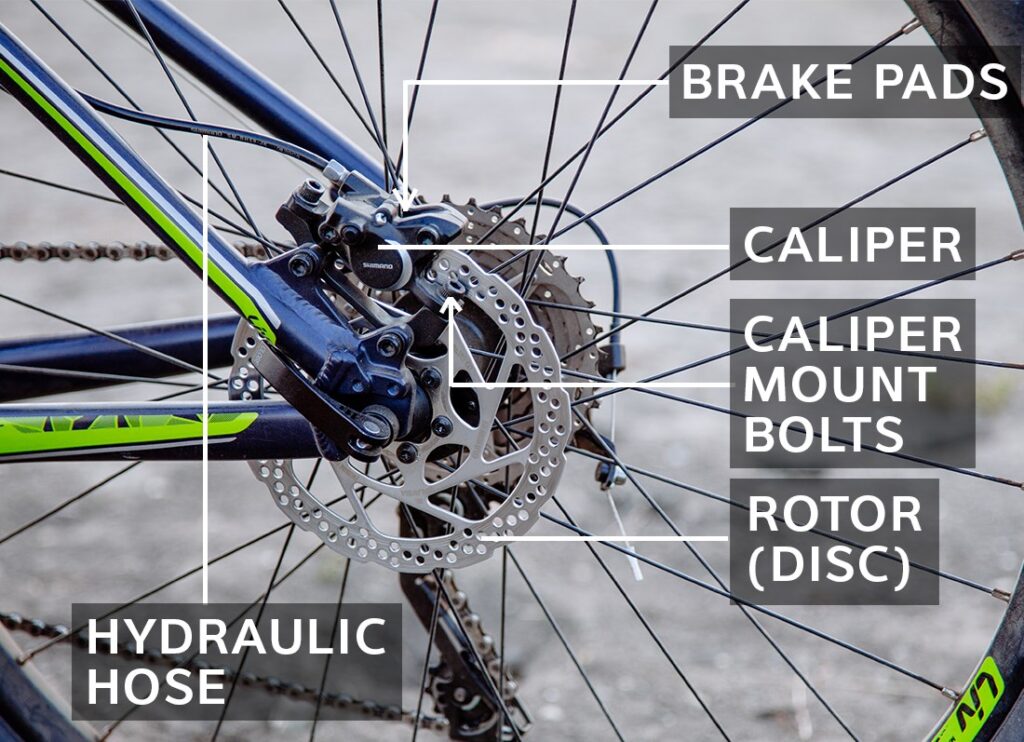
Levers
Brake levers are special attachments that are fixed to the handlebars of e-bikes and are used for the brake’s work. They are fixed to the handlebars at the sides. The left brake lever controls the front wheel and the right brake lever controls the rear brake.
The main levers do not have any auxiliary functions, but at the same time, their function and serviceability are vital to the cyclist.
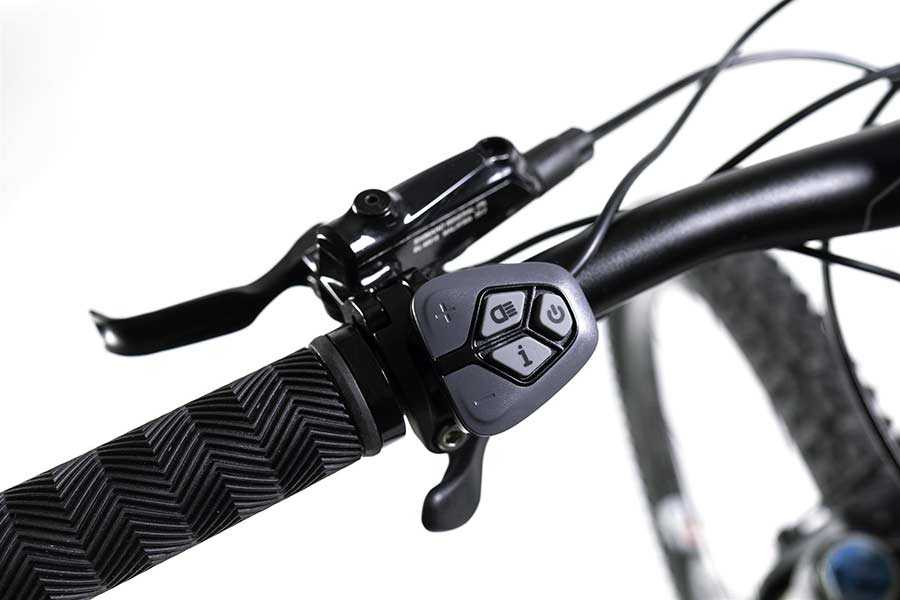
Cable
This component is needed to connect the lever to the caliper. Most electric bikes use a disc brake system.
The advantage of this system is the democratic price of repair and maintenance.
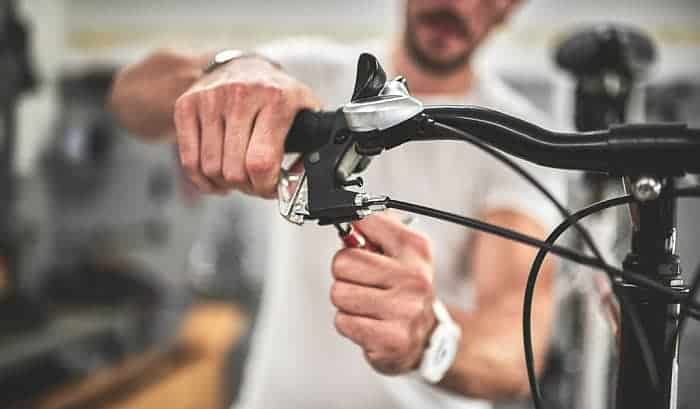
Mechanical disc brakes are also easier to repair, but hydraulic disc brakes provide high braking force. Mechanical disc brakes have air in the cables and hydraulic systems have fluid in the cables.
Caliper
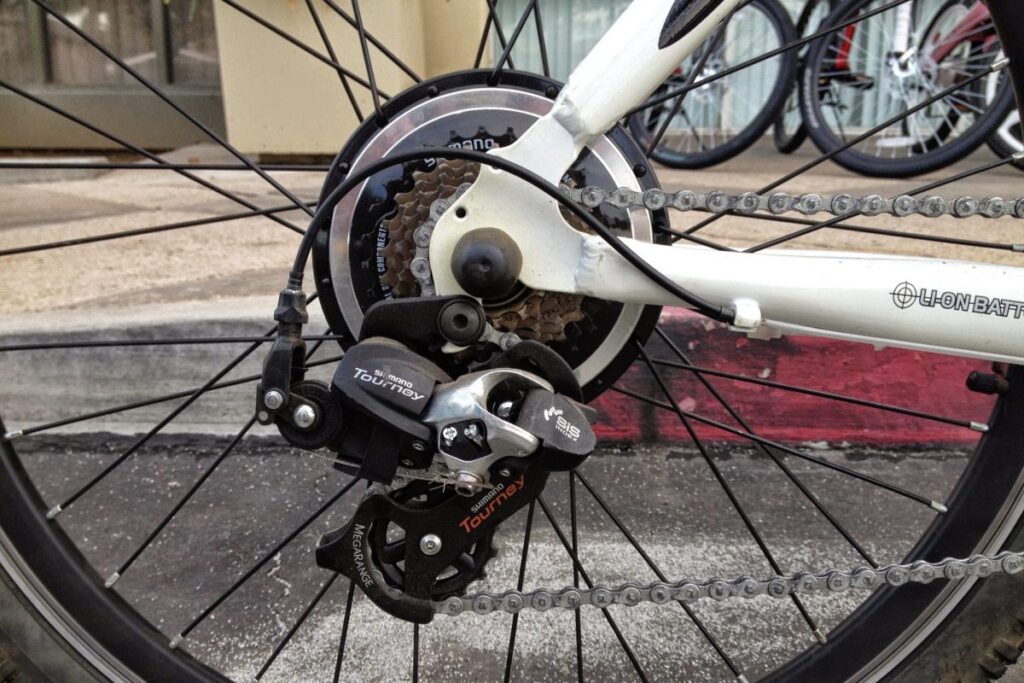
The caliper consists of a hand brake pad and brake caliper’s pistons that are set in motion when the brake lever is depressed. Their function is to push the brake pad into the rotor.
Brake pads are needed to slow down the speed of the vehicle. They do this by rubbing against the brake rotor and absorbing the brake rotor’s heat as they press against it.
Typically, brake pads are the first part of an e-bike that needs to be replaced.
Brake rotor
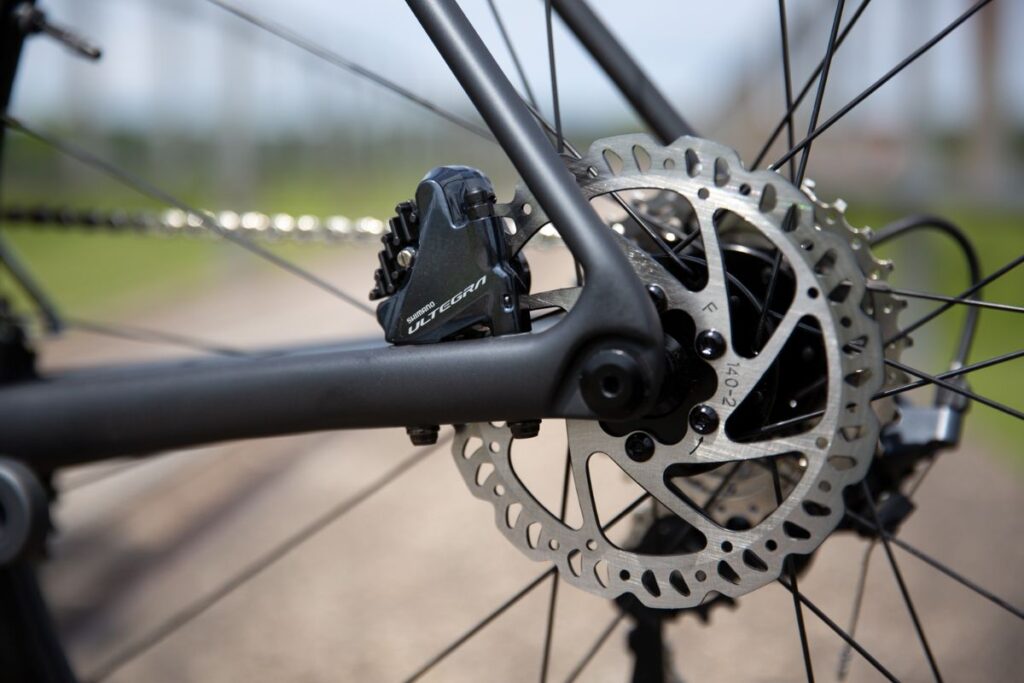
The brake rotor is the most visible part of the brake system of e-bikes. It is a metal disc that is located in the wheel hub. When the brake pad is pressed against the spinning brake rotor, the rotor is decelerated and friction is created so that the wheel stops turning.
The strength of the deceleration depends on the size of the brake rotor. The larger the brake rotors, the faster the wheel stops spinning. But there is a nuance here, which is that the brake pads fail much faster on a larger brake rotor, which is due to the more intense friction. Typical ebike brake rotors range in size from 160-180 mm.
How do the e-bike’s brakes work?
With a general understanding of each part of your bike’s brake system, you can talk about how the brakes work.
The braking system of e-bikes is based on the principle of traditional bicycles and is not very complicated. It consists of a rotor, a lever, a caliper, and a cable. The only element with which the cyclist is in contact is the lever.
When the cyclist pulls the brake lever, the cable begins to press on the caliper pistons, which push the brake pad, attached to the caliper, down into the brake rotor using frictional force to the spinning wheel hub. The greater the pressure on the brake lever, the more the brake pad pushes into the rotor, thereby increasing the friction force.
The friction generated by this force creates a braking force that stops the movement of the vehicle. The harder the cyclist squeezes the lever, the more force is applied to the brake pad, and the faster the cyclist stops.
The higher the friction force, the faster the wheel will decelerate. Due to their size, larger rotors dissipate more heat, so that greater braking forces do not damage the components of the brakes.
But the main disadvantage of this process is the thermal energy that is generated by friction. The heat energy generated by braking is the main cause of component failure. As a result, you could have malfunctions with critical braking components such as the brake pad, brake calipers, and even the brake rotor fail. But if your braking system fails, that doesn’t mean it’s beyond repair. By following the recommendations in this article, you will be able to solve many problems related to the brake system components of your electric bike.
Brakes give the cyclist full control over the electric bike. Thanks to the disc brakes, you can stop your e-bike whenever you need to. It does not matter if you encounter obstacles in your path or just want to stop.
You need to have powerful and reliable brakes that will keep you safe and confident on your ride. The faster your electric bike is, the more braking power it needs.
If you’ve started to notice that you need more force to stop your e-bike, it’s an indication that your vehicle needs maintenance. Without a reliable braking system, you could be severely injured or injure others.
Maintenance of the brakes
Rotor Cleaning
A dirty or failed brake rotor is one of the most common causes of brake failure. Small rocks, dirt, and road debris can get into the brake mechanism and block it.
Cleaning e-bike rotors is easy because all you need is a washcloth or rag to wipe down the rotor disc. Get rid of any items that are stuck in the disc brakes and go over it several times with the rag.
If there are cracks or other serious defects on your brake rotor, you should replace it immediately.
Check the bolts and brake caliper
The entire braking system of an e-bike is held together by bolts. It is not always possible for the cyclist to notice a loose bolt. Before every ride, it is a good idea to check that the bolts are securely fastened. Keep in mind that if a bolt comes loose completely, it will cause serious damage to the braking system.
A brake caliper can become misaligned as it is used. You will feel more resistance as the calipers are unable to press the pads against the wheels and this contributes to even more deceleration and failure of the caliper. You can tell if your calipers are misaligned by a specific sound when you apply the brake.
Caliper alignment can be as easy as it is difficult. It all depends on the sealing of this part. Some calipers are secured with just a couple of bolts. Some bolts are easy to unscrew with available hand tools, and some are fixed firmly.
Many stores provide caliper adjustment services. But if you feel up to it, do it yourself.
Check if the brake pad is oily
An oily brake pad can cause poor braking. The brake pad is closely related to the brake rotor. Given the kind of roads you have been driving on, it may be dirty or wet. The more slippery the brake pad, the less friction it will provide.
Typically, brake pads are cleaned with specialty chemicals or with isopropyl alcohol. Using other non-specialized products can cause damage to your pads, making them even dirtier.
Which is better: mechanical or hydraulic disc brakes

Regarding pricing, electric bike models with mechanical brakes are much cheaper than hydraulic disc brakes. But you can, if you want, install any e-bike brakes. However, this manipulation is expensive and time-consuming.
The mechanical disc brake system is easy to use. They function with the help of cables and do not require the use of special tools. The disadvantage is that they are difficult to adjust and are subject to rapid wear and tear.
However, both mechanical and hydraulic disc brakes are many times better than rim brakes in terms of performance.
In terms of performance, hydraulic disc brakes are much better than mechanical disc brakes. Their fluid filling is much more efficient than a cable, which breaks down quickly. Also, mechanical disc brakes are highly susceptible to dirt, so they are not the best option for off-road riding.
When buying e-bikes, most buyers prefer models with mechanical disc brakes. This is because there are more of these bikes, they are much cheaper and easier to maintain.
However, the choice is yours. Why not if you are willing to pay a lot of money for a reliable hydraulic braking system?
To ensure a safe ride, check your brakes for proper operation. The brake system is an essential part of safe driving. Faulty brakes can lead to accidents and unfortunate consequences.
However, a small breakdown is very easy to fix and worth taking care of in advance. It is worth taking just a few minutes to periodically test, tune and clean your braking system, especially if you are having trouble braking.
In the end, just a few minutes of your time will save your finances and your life. With serviceable brakes, cyclists feel more confident and safer on the road.
FAQ
Do eBikes have electric brakes?
The braking system of e-bikes is activated by special levers attached to the handlebars.
Do eBikes recharge when braking?
Some electric bicycles have a regenerative braking option that recharges the bike’s battery when you brake. Electric bikes with a direct-drive motor have this function.
What kind of brakes do eBikes have?
In general, electric bicycles are equipped with a mechanical disc braking system.
Mechanical brake cables are filled with air and the hydraulic system with fluid. Mechanical brakes are much easier to repair, but if you need a lot of braking power, it is better to choose models of e-bikes with hydraulic brakes.
Do eBikes have brake sensors?
E-bikes are equipped with brake sensors, which are responsible for disconnecting power when the brake levers are actuated.
The sensor sends a signal to the speed regulator, overriding the output when the pedal booster is applied. The brake sensor does not change the brake performance of the electric bicycle. It only cuts off power to the motor.
Can you ride an electric bike without pedaling?
Some bikes are equipped with a throttle control that allows you to ride without pedaling. But this option has certain disadvantages. Other varieties of e-bikes involve rotating the cyclist’s pedals to activate the battery and motor.
